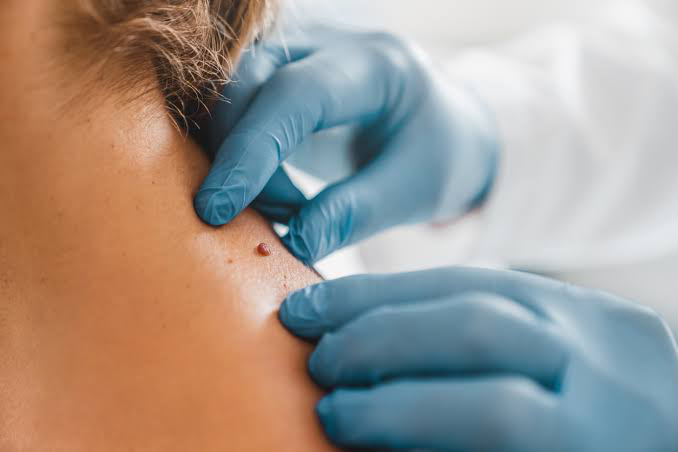STORY By HANNAH NALIANYA
Attention Deficit Hyperactivity Disorder (ADHD) is often misunderstood as a simple inability to focus or control impulses. However, it is a complex neurodevelopmental condition that affects millions of people worldwide. ADHD influences various aspects of life, including education, work, relationships, and self-esteem.
While it is most commonly diagnosed in children, many adults continue to experience its challenges, often without realizing that ADHD is the underlying cause of their struggles.
ADHD is characterized by persistent patterns of inattention, hyperactivity, and impulsivity that interfere with daily functioning. While occasional distraction and restlessness are common in everyone, individuals with ADHD experience these symptoms at a much higher intensity, making it difficult to stay organized, complete tasks, or manage their emotions effectively.
There are three main types of ADHD. The inattentive type is marked by difficulty focusing, forgetfulness, and trouble following through with tasks. People with this form of ADHD often lose things, struggle with organization, and may appear absent-minded.
The hyperactive-impulsive type is characterized by excessive movement, impulsive decision-making, and difficulty waiting for one’s turn. Individuals with this type may talk excessively, interrupt others, or act without thinking. The combined type, which is the most common, includes symptoms of both inattention and hyperactivity-impulsivity, making daily life even more challenging.
One of the biggest myths about ADHD is that it only affects children. While symptoms often emerge in childhood, many individuals continue to experience them well into adulthood. However, because hyperactivity may become less visible with age, many adults go undiagnosed. Instead of running around or fidgeting constantly, they may struggle with inner restlessness, chronic procrastination, difficulty managing responsibilities, and impulsive behaviours that affect their work or personal life.
Another misconception is that ADHD is simply a result of laziness or a lack of discipline. In reality, ADHD is linked to differences in brain function, particularly in areas responsible for impulse control, focus, and executive functioning. People with ADHD often want to complete tasks but find it difficult to structure their time and attention effectively. This is not due to a lack of effort but rather a neurological condition that requires proper support and management.
Many adults with ADHD remain undiagnosed because their symptoms are mistaken for personality traits or bad habits. They may be labeled as careless, forgetful, or irresponsible without realizing that their struggles stem from a medical condition.
Unlike children, adults with ADHD may not display obvious hyperactivity, but they often battle chronic disorganization, difficulty prioritizing tasks, impulsive spending, or trouble maintaining relationships.
These challenges can have long-term consequences, especially in professional settings. Many adults with ADHD struggle with meeting deadlines, switching jobs frequently, or feeling overwhelmed by work responsibilities. At home, they may forget important dates, leave household chores unfinished, or experience conflicts due to impulsive behaviour.
Despite these struggles, ADHD also brings unique strengths. Many individuals with the condition are highly creative, energetic, and able to think outside the box. Their ability to hyper-focus on tasks they find interesting allows them to excel in certain careers, particularly in dynamic fields that require innovation and quick thinking.
Although there is no cure for ADHD, there are various ways to manage its symptoms and improve daily functioning. Medication is one of the most common treatments, with stimulant and non-stimulant options available to help regulate attention and impulse control. However, medication is not a one-size-fits-all solution, and many individuals benefit from behavioral therapy, which helps them develop coping mechanisms and better time management skills.
Lifestyle changes also play a crucial role in managing ADHD. Regular physical exercise has been shown to improve focus and reduce impulsivity, as it helps regulate dopamine levels in the brain. A structured daily routine, including the use of planners, reminders, and to-do lists, can help individuals stay on top of their tasks. Additionally, mindfulness and meditation techniques have been found to improve concentration and reduce stress, allowing individuals with ADHD to regain control over their thoughts and actions.
Understanding ADHD is essential for creating a more inclusive and supportive society. In educational settings, children with ADHD need patience and tailored learning strategies rather than punishment for behaviors beyond their control. Teachers and parents should focus on structured guidance and positive reinforcement to help these children succeed academically and socially.
In the workplace, employers should recognize that individuals with ADHD bring unique strengths to the table. They thrive in fast-paced environments and excel in roles that require creativity, problem-solving, and adaptability. Instead of viewing ADHD as a limitation, workplaces can implement strategies to help employees manage their challenges while capitalizing on their strengths.
Beyond schools and workplaces, society as a whole must work toward reducing the stigma surrounding ADHD. Many individuals feel ashamed or frustrated by their struggles, believing they are simply not trying hard enough. By fostering awareness and understanding, we can create an environment where people with ADHD feel empowered rather than discouraged.
ADHD is more than just being easily distracted or hyperactive. It is a neurological condition that affects people in diverse ways, presenting both challenges and strengths. While ADHD can make daily life difficult, proper management strategies, support systems, and awareness can help individuals navigate their struggles successfully.
Instead of viewing ADHD as a setback, society should embrace the unique abilities and perspectives that individuals with ADHD bring to the world. By shifting the focus from stigma to empowerment, we can ensure that those with ADHD are given the tools they need to reach their full potential.
The Feature Story Writer is a Second Year Student at Chuka University pursuing a Bachelor of Arts Degree in Communication Studies





























 MWINGI TIMES for timely and authoritative news.
MWINGI TIMES for timely and authoritative news.